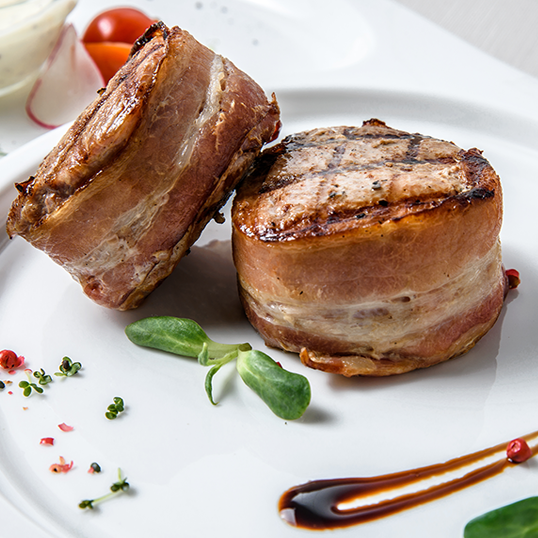ACTIVA®
Create Stable Bonds with Enzyme Preparations
ACTIVA® enzyme preparations cross link meat, poultry, and fish proteins to help create unique food concepts. Our bonding systems support an array of benefits such as, portion control, raw sliceability, raw material utilization, and so much more. The covalent bonds formed are freeze/thaw and heat stable and are not affected by salts or phosphates. Explore our ACTIVA® line and reach out for more information on your next project.


Transglutaminase: A Versatile Ingredient
Providing superior results in an array of applications
Transglutaminase (TG), composed of simple amino acid chains, is an enzyme that is present in nature and has been studied by many researchers for use in food around the world. Our line of transglutaminase/enzyme preparations called ACTIVA® is produced through a fermentation process which is similar to making beer, wine and cheese; using conventional microorganisms.
Transglutaminase in ACTIVA® preparations is able to improve the physical properties of various foods containing proteins. The use of the product offers various benefits to food companies and consumers.
In bakery and milk products, ACTIVA® preparations improve texture and loaf volume in baked breads, but also enhances mouthfeel, creaminess, and improves yield in dairy applications. In processed meat products, such as emulsified sausage and cooked ham, they improve texture and increase connectivity, thus decreasing loss during manufacturing process. In meat and fish, ACTIVA® preparations enable combining quality parts of meat/fish, decreasing loss and waste, and consequently reducing pricing of the final products. This is an important contribution to a responsible and sustainable food chain. This also helps to reduce the negative environmental effects of farming by maximizing the use of the food that is produced. ACTIVA® preparations also replace the benefits lost when reducing salt in meat systems while maintaining or improving texture in meat applications.
Reach out to Learn More
We are here to support your formulation work with our team of culinary scientists
Industries
Backed by Science
Safety
This bond is stable in many environments including heat, freezer and thaw. Typically TG works within the protein of food materials, and contributes to improving applications across a multitude of food categories.
Related Resources
Dive deeper into the science of ACTIVA®
Frequently Asked Questions
AjiPro®-L remains generally stable in TMR for up to 24 hours. This is an important feature of an effective rumen protected lysine product since it has to be mixed with TMR, and it may take 12-24 hours for dairy cows to finish consuming the feed.
